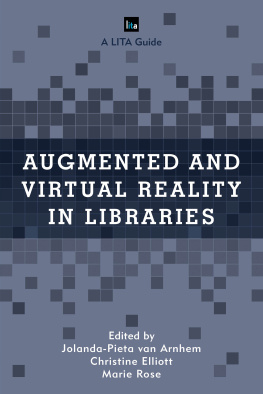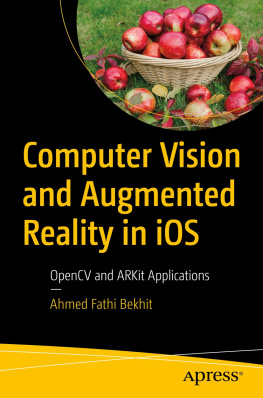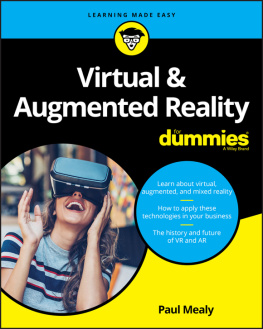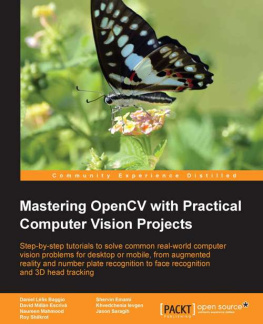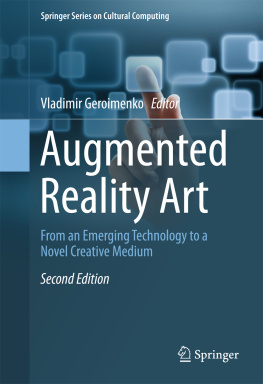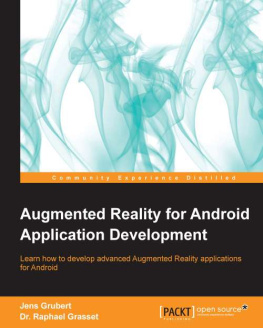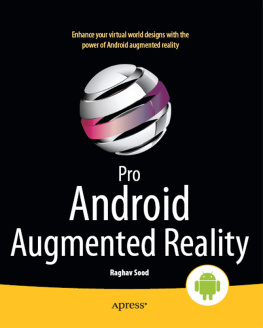Kevin Kee - Seeing the Past with Computers: Experiments with Augmented Reality and Computer Vision for History
Here you can read online Kevin Kee - Seeing the Past with Computers: Experiments with Augmented Reality and Computer Vision for History full text of the book (entire story) in english for free. Download pdf and epub, get meaning, cover and reviews about this ebook. publisher: University of Michigan Press, genre: Politics. Description of the work, (preface) as well as reviews are available. Best literature library LitArk.com created for fans of good reading and offers a wide selection of genres:
Romance novel
Science fiction
Adventure
Detective
Science
History
Home and family
Prose
Art
Politics
Computer
Non-fiction
Religion
Business
Children
Humor
Choose a favorite category and find really read worthwhile books. Enjoy immersion in the world of imagination, feel the emotions of the characters or learn something new for yourself, make an fascinating discovery.

- Book:Seeing the Past with Computers: Experiments with Augmented Reality and Computer Vision for History
- Author:
- Publisher:University of Michigan Press
- Genre:
- Rating:3 / 5
- Favourites:Add to favourites
- Your mark:
- 60
- 1
- 2
- 3
- 4
- 5
Seeing the Past with Computers: Experiments with Augmented Reality and Computer Vision for History: summary, description and annotation
We offer to read an annotation, description, summary or preface (depends on what the author of the book "Seeing the Past with Computers: Experiments with Augmented Reality and Computer Vision for History" wrote himself). If you haven't found the necessary information about the book — write in the comments, we will try to find it.
Kevin Kee: author's other books
Who wrote Seeing the Past with Computers: Experiments with Augmented Reality and Computer Vision for History? Find out the surname, the name of the author of the book and a list of all author's works by series.
Seeing the Past with Computers: Experiments with Augmented Reality and Computer Vision for History — read online for free the complete book (whole text) full work
Below is the text of the book, divided by pages. System saving the place of the last page read, allows you to conveniently read the book "Seeing the Past with Computers: Experiments with Augmented Reality and Computer Vision for History" online for free, without having to search again every time where you left off. Put a bookmark, and you can go to the page where you finished reading at any time.
Font size:
Interval:
Bookmark:
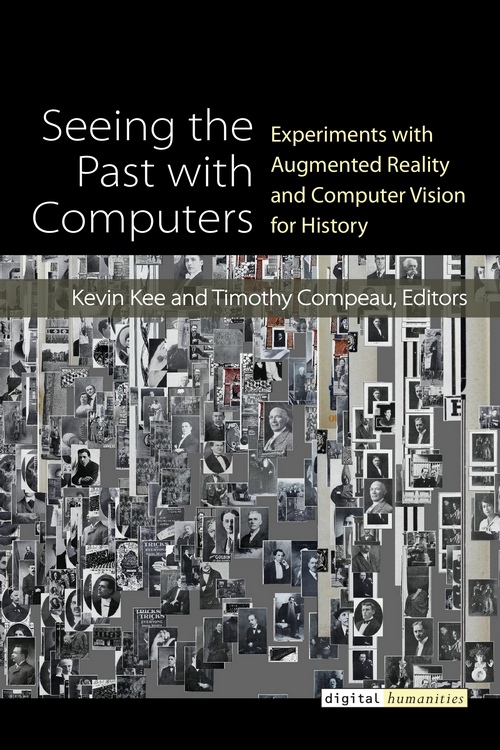
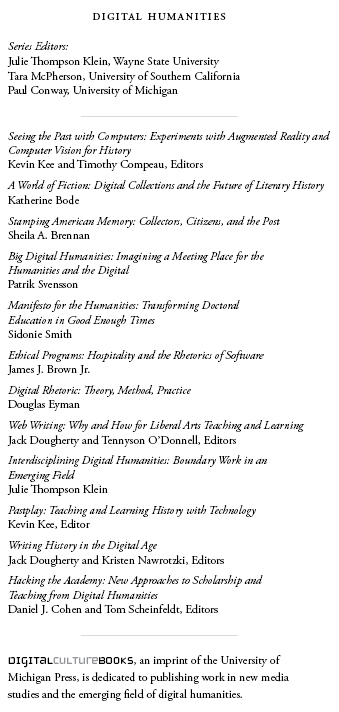
Kevin Kee and Timothy Compeau, editors
University of Michigan Press
Ann Arbor

This work is licensed under a Creative Commons Attribution 4.0 International License. Note to users: A Creative Commons license is only valid when it is applied by the person or entity that holds rights to the licensed work. Works may contain components (e.g., photographs, illustrations, or quotations) to which the rightsholder in the work cannot apply the license. It is ultimately your responsibility to independently evaluate the copyright status of any work or component part of a work you use, in light of your intended use. To view a copy of this license, visit https://creativecommons.org/licenses/.
Library of Congress Cataloging-in-Publication Data
Names: Kee, Kevin B. (Kevin Bradley), 1969 editor. | Compeau, Timothy, 1981 editor.
Title: Seeing the past with computers : experiments with augmented reality and computer vision for history / Kevin Kee and Timothy Compeau, editors.
Description: Ann Arbor : University of Michigan Press, [2019] | Series: Digital humanities | Includes index. | Identifiers: LCCN 2018034886 (print) | LCCN 2018042822 (ebook) | ISBN 9780472124558 (E-book) | ISBN 9780472900879 (Open Access) | ISBN 9780472131112 (hardcover : alk. paper) |
Subjects: LCSH: Digital humanities. | Augmented reality. | Computer vision.
Classification: LCC AZ105 (ebook) | LCC AZ105 .S4 2019 (print) | DDC 001.30285dc23
LC record available at https://lccn.loc.gov/2018034886
doi: https://dx.doi.org/10.3998/mpub.9964786
The editors gratefully acknowledge the generous financial support of the University of Ottawa, the Canada Research Chairs program, and Brock University, which provided the time and funds to bring the Seeing the Past with Computers project to completion.
Kevin Kee and Timothy Compeau
Tim Sherratt and Kate Bagnall
Jentery Sayers
Bethany Nowviskie and Wayne Graham
Kari Kraus, Derek Hansen, Elizabeth Bonsignore, June Ahn, Jes Koepfler, Kathryn Kaczmarek Frew, Anthony Pellicone, and Carlea Holl-Jensen
Devon Elliot and William J. Turkel
Edward Jones-Imhotep and William J. Turkel
Ian Milligan
Andrew Roth and Caitlin Fisher
Geoffrey Rockwell and Sean Gouglas
Timothy Compeau and Robert MacDougall
Kevin Kee, Eric Poitras, and Timothy Compeau
Shawn Graham, Stuart Eve, Colleen Morgan, and Alexis Pantos
Digital materials related to this title can be foundon the Fulcrum platform via the following URL:https://doi.org/10.3998/mpub.9964786
Kevin Kee and Timothy Compeau
We live in a world of seeing computers. From airport security to social media to games, machines that see are embedded in our lives in subtle ways that, ironically, go unseen. For better or worse, face-recognition software and algorithms help law enforcement and security agencies track individuals in crowds; toll road cameras snap photographs of passing license plates to automatically bill the owners; computer imaging helps medical professionals diagnose patients; and smartphone cameras and GPS help game players capture virtual creatures in the real world. From the mundane to the life-altering, seeing computers are actively helping people see the present. The same technology can also be used to see the past, and in this book we explore the ways in which we can turn their gaze toward the study and communication of history.
In late 2014, a group of digital humanists met in Niagara-on-the-Lake, Ontario, to discuss how seeing technologies might be harnessed for historical research and teaching. Historians and archaeologists have all wished, at some point, that they could see the past firsthand. The confusion and ambiguity created by fragmentary sources tend to equally excite our doubts and imaginationwe worry about the veracity of our sources, and we wonder what might exist in the gaps in our evidence. While that immediate encounter with the past remains a subject for science fiction writers, the scholars in this volume have taken up the challenge of exploring how seeing technologies Page 2 can add to, and change our understanding of, the practice of history. Seeing the Past with Computers demonstrates new and innovative ways of accessing, understanding, writing about, teaching, and sharing history.
We focus on two related forms of seeing technology that are changing how some humanists work, but remain untapped and confusing for most scholars and students: computer vision and augmented reality. Computer vision (CV) is a technology that can access, process, analyze, and understand visual information. Consider, for instance, optical character recognition (OCR), which allows computers to read text from digitized print sources. Whereas scholars used to read a few books deeply (close reading), OCR has facilitated what Franco Moretti called distant reading, helping us mine and analyze thousands of books across eras, genres, and subjects. Such quantitative approaches to textual analysis have their critics, but they also hold many lessons for those interested in history. Yet history involves more than just the textual evidence historians have traditionally privileged; traces of the past are also embedded in the visualphotographs, paintings, sketchesand material culture. The proliferation of digitized visual sources presents historians with exciting new technical and theoretical problems and opportunities. The scholars in this collection offer ways of thinking about where we might look for source material, and how we might use CV to analyze those sources, in the context of our research or teaching, to ensure broader, deeper, and more representative understandings of the past.
Computer vision supports augmented reality (AR), which overlays digital content onto the real-world objects that a computer sees, thereby augmenting our view of our surroundings. AR is also helping us study, see, and share history in compelling new ways. Although historians have long been interested in augmenting the present with the past through plaques and monuments, digital technologies increase the possibilities. For example, AR at museums or historical sites can provide on-the-spot supplementary information, telling hidden stories or offering lesser-known facts to enhance the visitors knowledge of an item or space. Historic photographs, 3D reconstructions, and re-enactments of historic events can be overlaid onto present-day geography, demonstrating how an object or environment has changed over time. And GPS-linked AR can prompt location-specific historical data, guiding visitors at sites of interest, and increasing their sensory engagement with a place. AR applications can provide a seemingly magical way to tease out the history all around us, allowing nonspecialists to see the past in a manner similar to historians and archaeologists.
Page 3 Other related experimental technologies have begun to be explored by historians: haptic interfaces, which privilege touch, and scent-scapes, which privilege smell, are two intriguing areas of sensory research. Our book focuses primarily on sight; AR and computer vision employ similar principles of seeing technology, and have reached a place in their development where they can be hacked and harnessed by the nonspecialist. In the pages that follow we explore the ways in which they can be employed in the archive, in the museum, in the classroom, and anywhere else that the imagination leads.
Next pageFont size:
Interval:
Bookmark:
Similar books «Seeing the Past with Computers: Experiments with Augmented Reality and Computer Vision for History»
Look at similar books to Seeing the Past with Computers: Experiments with Augmented Reality and Computer Vision for History. We have selected literature similar in name and meaning in the hope of providing readers with more options to find new, interesting, not yet read works.
Discussion, reviews of the book Seeing the Past with Computers: Experiments with Augmented Reality and Computer Vision for History and just readers' own opinions. Leave your comments, write what you think about the work, its meaning or the main characters. Specify what exactly you liked and what you didn't like, and why you think so.

